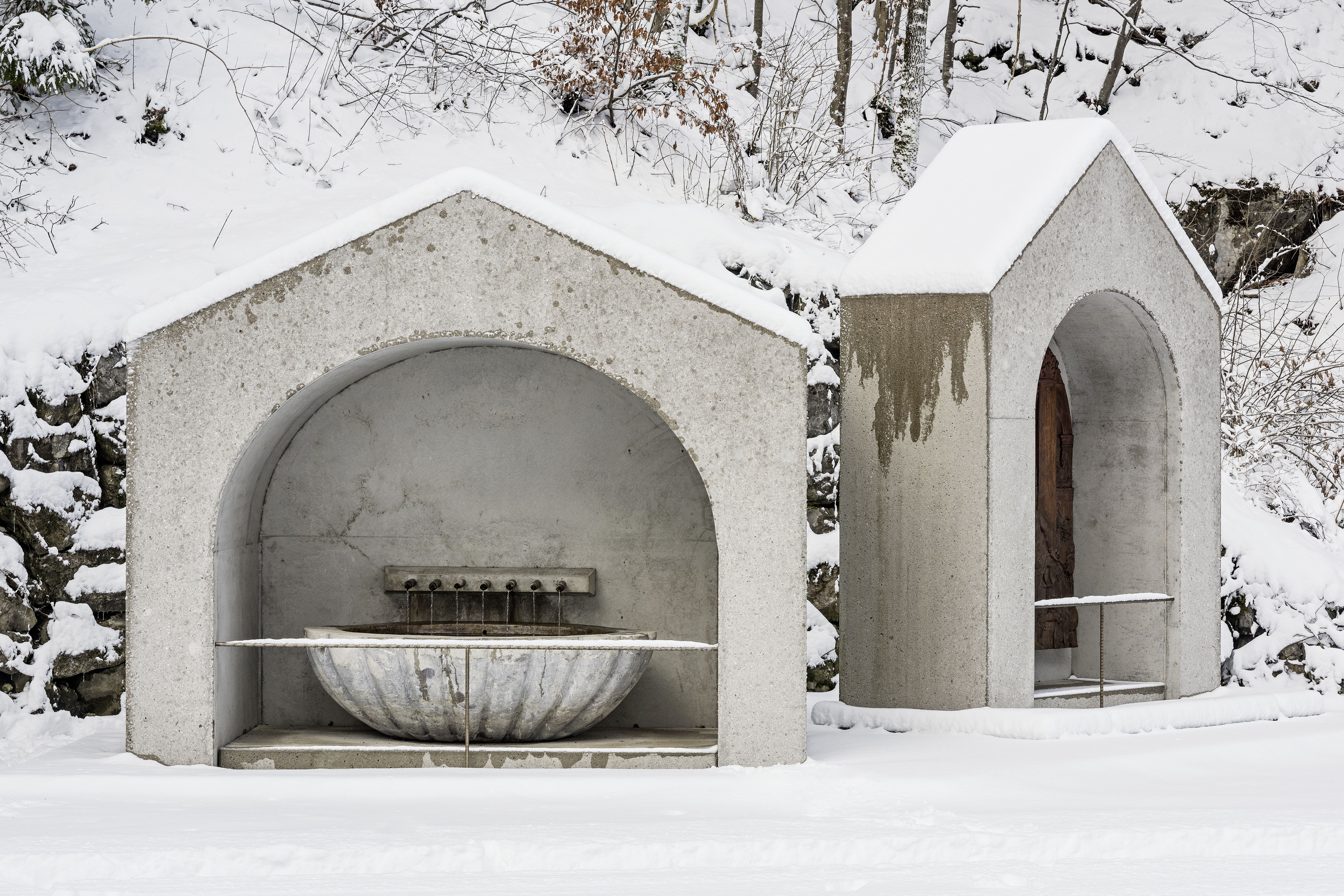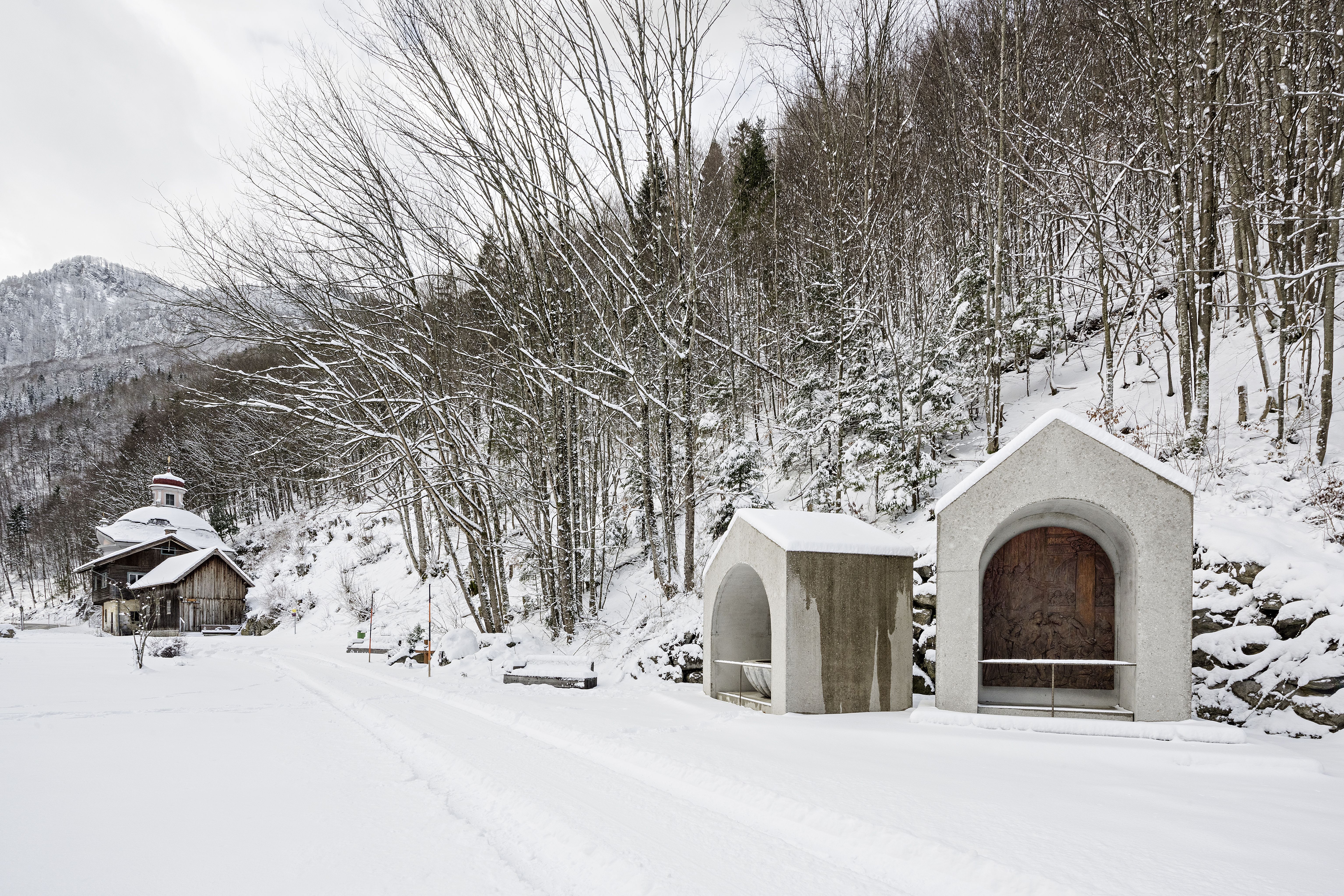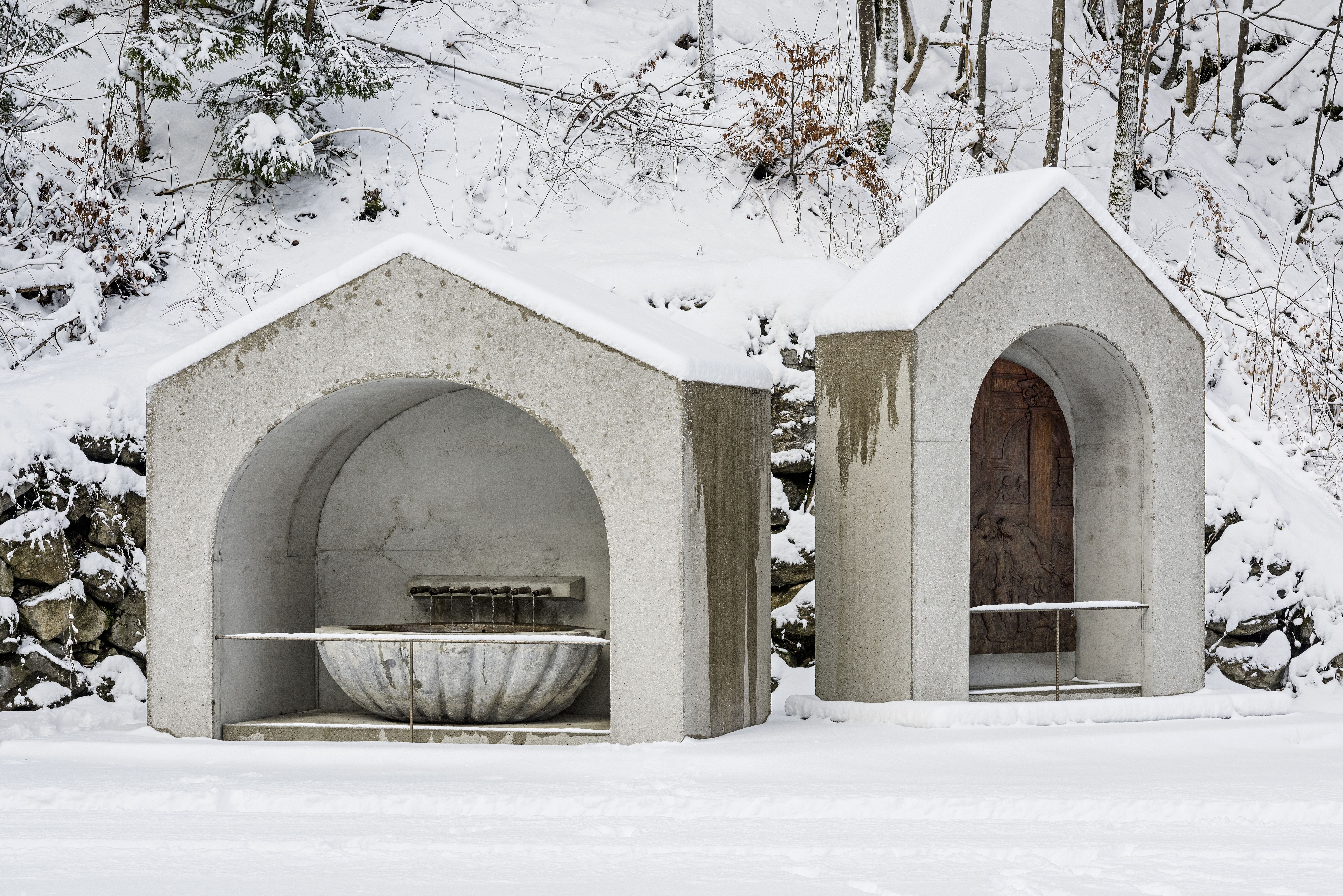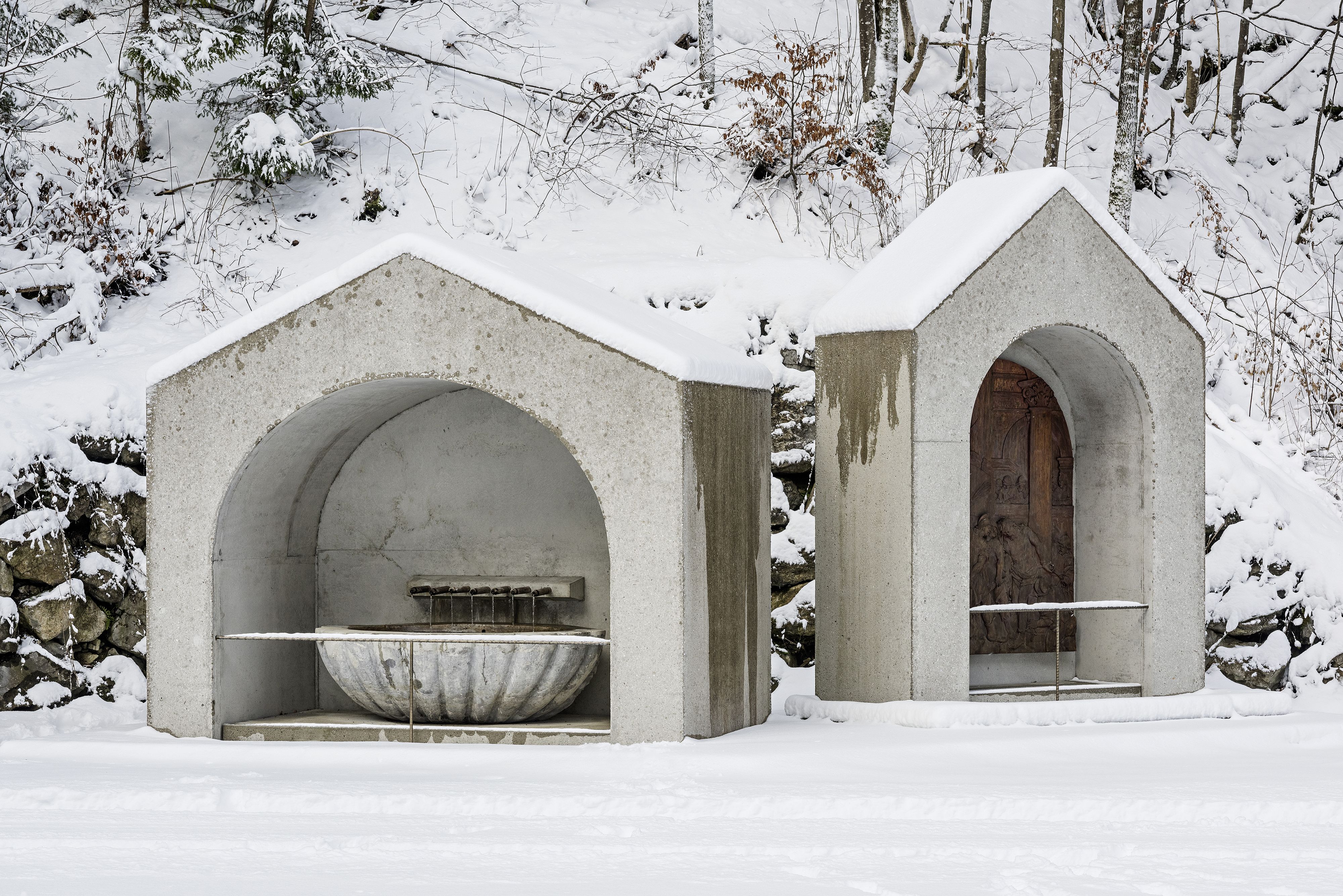Anna Wickenhauser
:
Von Eins zu Zwei
Back
Information
The Maria Siebenbrünn Baroque Chapel in Türnitz, Austria, is located on the Via Sacra, the oldest pilgrim route in Austria. Since it was completed in 1729, pilgrims have been stopping over here to drink the water from the seven springs that lend this place its name. Because the water was believed to have healing power, in addition to the chapel, the historic ensemble of buildings also included the living quarters and service rooms of a hermitage as well as a springhouse on the other side of the road. The latter consisted of a shell-shaped basin made of marble and probably a sculpture of Mary, which has since gone missing. In 2012, a competition for redesigning the springhouse was issued by the Cistercian monastery in Lilienfeld.
The Maria Siebenbrünn Baroque Chapel in Türnitz, Austria, is located on the Via Sacra, the oldest pilgrim route in Austria. Since it was completed in 1729, pilgrims have been stopping over here to drink the water from the seven springs that lend this place its name. Because the water was believed to have healing power, in addition to the chapel, the historic ensemble of buildings also included the living quarters and service rooms of a hermitage as well as a springhouse on the other side of the road. The latter consisted of a shell-shaped basin made of marble and probably a sculpture of Mary, which has since gone missing. In 2012, a competition for redesigning the springhouse was issued by the Cistercian monastery in Lilienfeld. At this time, only the basin was left of the original structure, which had been moved to its current position on the same side of the road as the other buildings when the road was widened in 1979. The art and architecture historian Henny Liebhart-Ulm and the architect Anna Wickenhauser, who won the competition, also found in the springhouse a Baroque wood relief depicting a flagellation, which had apparently been added to the house when it was relocated. The primary challenge for the two designers was to find a form that would take the typological characteristics of the historic ensemble of buildings’ architecture into consideration, while also representing its own unique temporal context. This meant that the architectural changes from the 1970s had to be undone in order to let the meaning of the original ensemble become visually accessible through contemporary materials.
The water basin and the relief were thus separated again and placed in two independent houses made of prefabricated, sand-blasted concrete elements on a joint base made of exposed aggregate concrete. For the woodcut relief, which was originally part of a rosary path, they chose the architecture of a chapel shrine; for the water basin, a gabled chapel. Despite the fact that both structures form a clear unit in their materiality and fundamentally reduced shape, they nonetheless clearly reflect the Baroque hierarchy between sacral and utilitarian buildings. This can be seen in the different angles of the gables and the staggered height of the historic ensemble, the individual buildings of which were built in different angles to each other in a loose arrangement. The new buildings each face the Via Sacra at an angle, while also pointing slightly away from each other. The artefacts can thus be seen by the hikers already from a great distance: The wood relief is easily sighted from the mountain, and the water basin from the valley. Because it is a sacral element, the wayside shrine with the relief is narrower and taller than the spring house and is somewhat elevated with an additional base.
The springhouse in Türnitz reminds us of the deliberately austere churches and monasteries of the Cistercians that are remarkable in their simplicity, functionality, and their exceptional design of aesthetic spatial effects. Because of its stereometric form and use of concrete – a material that could hardly be more humble – the building structure “could be interpreted as a missing piece or a placeholder for what is no longer there,” said Henny Liebhart-Ulm. This also allows for a reinterpretation that does justice to the contemporary demands of architecture: The forms of the buildings not only refer to local architectural history, but also on an abstract level to traditional types of buildings and their functions. The combination of functionality and structural analysis bridges the dualism between concretization and abstraction. On a meta-level, the architecture becomes the narrator of history, while the moss and patina tell their own story.
(Cornelia Offergeld)









